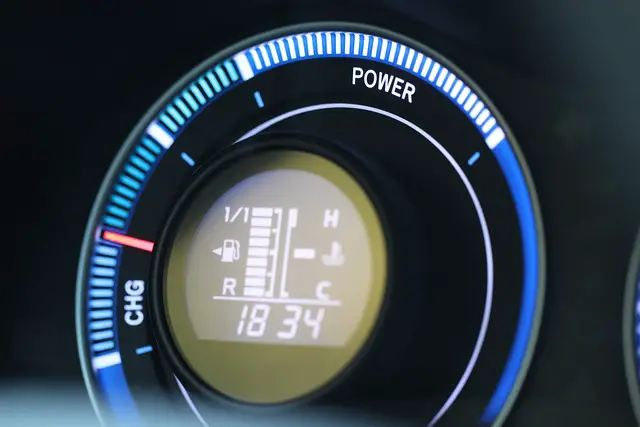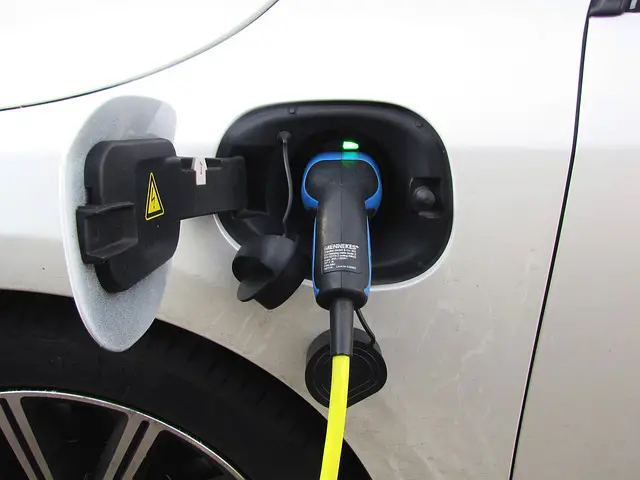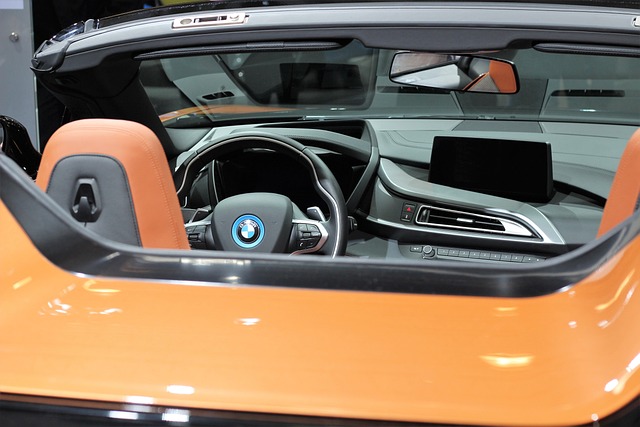Petrol hybrid uses a petrol engine and electric motor but cannot be charged externally. Plug-in hybrid has a petrol engine and is externally charged for electric-only driving.
TL;DR Petrol Hybrid Vs. Plug in Hybrid
Petrol hybrids, with their self-charging capabilities, provide a seamless transition between the petrol engine and electric motor, making them ideal for city driving and stop-and-go traffic. They are also more readily available on the market and generally have a lower price tag.
Plug-in hybrids allow you to drive longer distances in pure electric mode by simply plugging in your vehicle to charge. This makes them well-suited for those who frequently travel longer distances or have access to charging infrastructure. Additionally, plug-in hybrids often qualify for government incentives or tax credits due to their ability to operate solely on electricity.
What is a Petrol Hybrid?

A petrol hybrid, or gasoline hybrid, combines a conventional petrol engine with an electric motor. The electric motor assists the petrol engine during acceleration and low-speed driving, enhancing fuel efficiency.
Unlike plug-in hybrids, petrol hybrids cannot be charged externally; instead, they recharge the electric battery through regenerative braking and the petrol engine’s power.
The petrol engine continues to provide power during higher-speed driving. Petrol hybrids offer a balance between fuel efficiency and convenience, seamlessly switching between petrol and electric power to optimize performance based on driving conditions. They contribute to reduced emissions and improved fuel economy.
What is a Plug in Hybrid (PHEV)?

A plug-in hybrid (PHEV) combines an internal combustion engine with an electric motor, offering the flexibility of both petrol power and electric-only driving.
PHEVs can be charged externally, providing a range of electric-only driving before switching to the petrol engine. This dual-power capability allows for reduced emissions and increased fuel efficiency, particularly during shorter commutes. PHEVs often feature regenerative braking to recharge the electric battery.
The ability to plug in enhances their environmental benefits while offering the convenience of a traditional petrol engine for longer journeys, making them a bridge between conventional and fully electric vehicles.
Petrol Hybrid Vs. Plug in Hybrid – Key Differences
| Criteria | Petrol Hybrid | Plug-in Hybrid (PHEV) |
|---|---|---|
| Charging | Internal charging through regenerative braking and petrol engine | External charging from a power source, typically a wall outlet or charging station |
| Electric-Only Range | Limited electric-only range, usually at low speeds or during acceleration | Extended electric-only range, can cover significant distances without using the petrol engine |
| Charging Time | Not applicable for external charging | Requires external charging, with charging times varying based on power source and technology |
| Fuel Efficiency | Generally lower electric-only efficiency | Higher fuel efficiency in electric-only mode, especially during short trips |
| Driving Modes | Primarily petrol-assisted with occasional electric-only assistance | Can operate in petrol-only, electric-only, and hybrid modes, providing flexibility in driving |
| Emissions | Reduced compared to traditional petrol vehicles, but higher than PHEVs in electric mode | Lower emissions in electric-only mode, reducing overall environmental impact |
| Convenience | Offers convenience without reliance on external charging infrastructure | Requires access to charging infrastructure for optimal electric-only benefits |
| Use Cases | Well-suited for drivers with limited access to charging stations or shorter commutes | Ideal for drivers with access to charging infrastructure, frequent short trips, and the ability to charge regularly |
Advantages and disadvantages of a Petrol Hybrid
Advantages of a Petrol Hybrid:
Fuel Efficiency:
Petrol hybrids enhance fuel efficiency by utilizing electric power during low-speed driving and acceleration, reducing overall petrol consumption.
Lower Emissions:
Compared to traditional petrol vehicles, hybrids emit fewer pollutants, contributing to improved air quality and reduced environmental impact.
Convenience:
Petrol hybrids do not require external charging, offering the convenience of traditional refueling infrastructure and eliminating the need for dedicated charging stations.
Disadvantages of a Petrol Hybrid:
Limited Electric-Only Range:
Petrol hybrids have a limited electric-only range, primarily providing electric assistance during low-speed driving or acceleration.
Dependence on Petrol Engine:
At higher speeds or during sustained acceleration, petrol hybrids rely on the conventional petrol engine, limiting the potential for emissions reduction in certain driving conditions.
Less Environmental Impact Reduction:
While more environmentally friendly than traditional petrol vehicles, petrol hybrids may have a smaller impact reduction compared to plug-in hybrids or fully electric vehicles, especially in urban areas.
Advantages and disadvantages of a Plug in Hybrid
Advantages of a Plug-in Hybrid (PHEV):
Extended Electric-Only Range:
PHEVs offer a longer electric-only driving range, reducing reliance on the petrol engine and potentially allowing for daily commutes without using petrol.
Lower Fuel Consumption:
With the ability to charge externally, PHEVs can achieve higher fuel efficiency, especially for shorter trips where electric power is primarily used.
Reduced Emissions in Urban Areas:
PHEVs contribute to lower emissions in urban environments, where the electric motor can be utilized more frequently, reducing the environmental impact during city driving.
Disadvantages of a Plug-in Hybrid (PHEV):
Limited Charging Infrastructure:
Availability of charging infrastructure can be limited, affecting the convenience of external charging and impacting the ability to maximize electric-only benefits.
Higher Initial Cost:
PHEVs often have a higher upfront cost compared to traditional petrol or hybrid vehicles, primarily due to the cost of the electric components and battery technology.
Weight and Complexity:
The additional components, including the electric motor and battery, can increase the overall weight and complexity of PHEVs, potentially affecting handling and requiring additional maintenance.
Image Credits
Featured Image By – Goran Horvat from Pixabay
Image 1 By – Michael Bußmann from Pixabay
Image 2 By – (Joenomias) Menno de Jong from Pixabay








